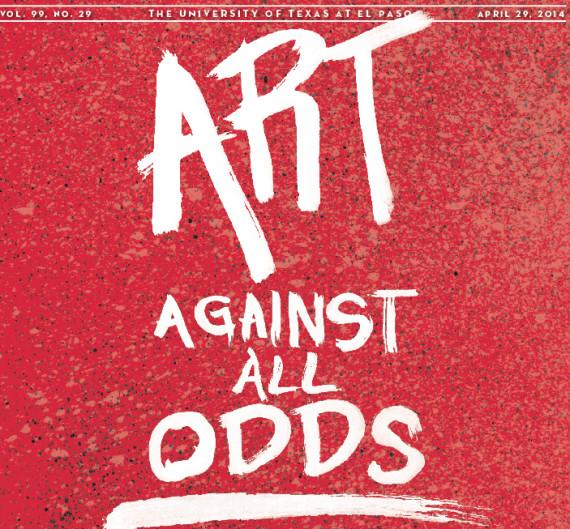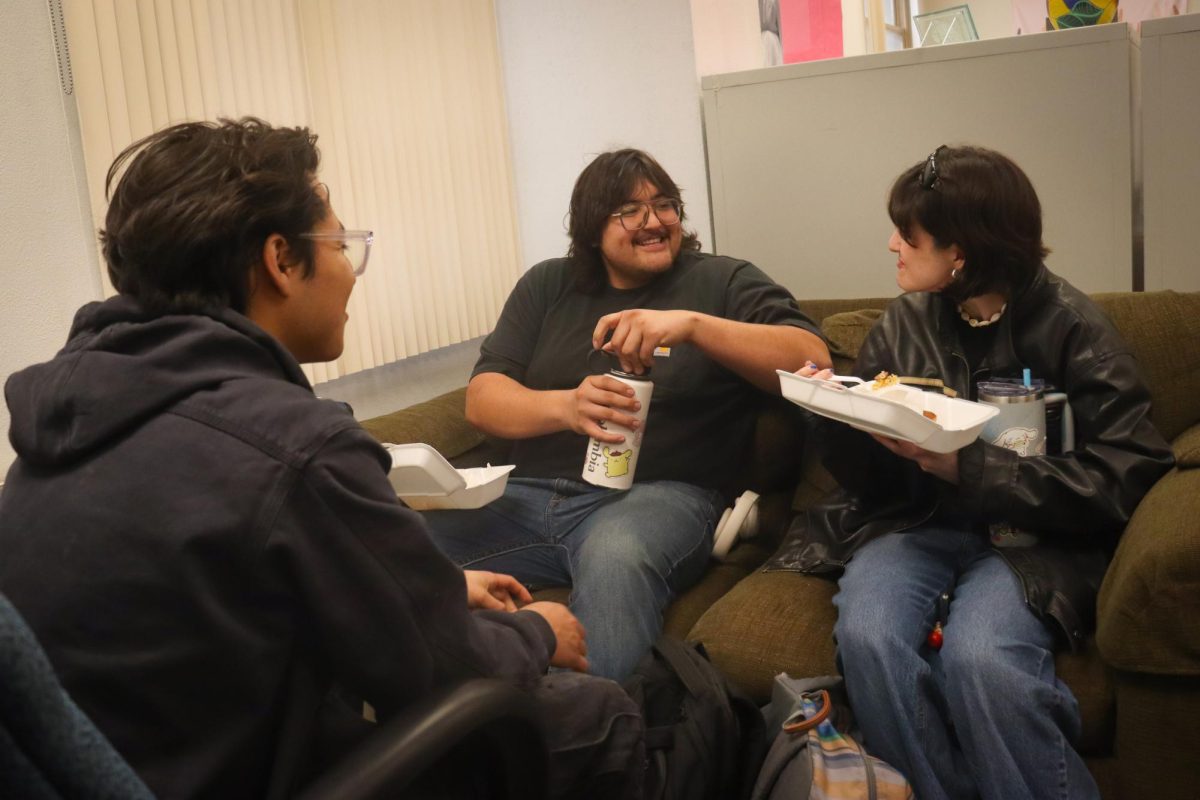A sense of inspiration in the workspace is necessary when it comes to producing art. However, at the Fox Fine Arts Center, students say they lack inspiration due to the lack of technological equipment and the deterioration of the building.
“Every artist wants their workspace to be their home—a place where we can be inspired, a place to create, an environment where we feel appreciated for what we do,” said Veronica Chaparro, senior art major. “It’s hard to do so when the walls are so dingy, colors are bland, the equipment is falling apart and being aware that ceiling tiles are crumbling. It’s heartbreaking, really.”
Chaparro said that it is not that the building isn’t being maintained, but that it’s outdated. It needs more than a facelift and needs to be renovated inside and out.
“Our professors and maintenance crew do their best to keep it all clean, but the building needs more than a paint job,” Chaparro said. “We’ve had a major leak in the sculpture room, where all the electrical equipment is kept, and many students were slipping on the floor and feared being electrocuted.”
According to Robert Moss, vice president for the Environmental Health and Safety Department, nothing has been reported to him that concerns mold, leaks or the crumbling of tiles at the Fox Fine Arts Center.
“Our department is always on the lookout for any type of circumstances that put the students’ life in danger and the campus as a whole,” Moss said. “However, if there is in fact any leaks or mold in the classrooms, we can certainly offer assistance on this matter. However, students have to voice their concerns to either a faculty member or the department chair, so this way we get contacted and take action on the matter.”
The Environmental Health and Safety Department is responsible for the oversight of the university’s chemical hygiene, biological safety training, the evaluation of fume hoods, bio-safety cabinets and radiation equipment. Moreover, they also conduct campus fire inspections and are available to offer any safety workshops.
Moss said that when an issue such as this presents itself, the first measure would be to visit the space and evaluate and assess its condition.
“For example, we would confirm if it’s a leak or just another form of discoloration in the walls or ceiling,” Moss said. “If it’s not, then we go ahead and approximate the square feet that have been affected. Lastly, if it is something that is out of our hands, we contact and hire a contractor, in order to remediate, and can come in and help improve the damaged area.”
According to Moss, there haven’t been a lot of instances where they’ve had to do this, but if it’s necessary, students and faculty are encouraged to call them for their assistance.
Cristina Moreno, senior ceramics major, said that compared to other art departments that she has visited, UTEP has a very decent program.
“People from out of town, professionals and faculty and staff from other universities, have constantly expressed their opinion on the building and say that we are very lucky to have
what we have here. Because according to them, this kind of space is not seen just anywhere,” Moreno said. “Overall, I think that students should be a little more appreciative of what we have here.”
Janet Luna, senior art education major, said that there are other factors that keep art students from working at the studio.
“The lack of ventilation is another factor that all of us face here in the Fox,” Luna said. “Especially in the departments where it’s crucial to have it, such as the printmaking and painting studios. This is very crucial since we are working with toxic chemicals constantly.”
As a result of the extractors not working properly, students often have to find another way to have the air circulate in the room.
“Technically, no chemicals or paint should be poured down the sink, which is why we have a bucket where students dump all this in, but it works the same as if we would use the sink,” Luna said. “The odor tends to stay for long periods of time, and the sink is already clogged up from the use of previous years. It has not been fixed yet.”
Luna said the odor travels around their workspace and also makes its way to the hallway, where students may be taking their lunch break.
Frank Espino, freshman drawing major, said they have received new equipment, but it’s still not what the students expect.
“We constantly receive leftover and second-hand equipment that other departments don’t use anymore, and that don’t work to its full 100 percent potential,” Espino said. “Unfortunately, there is not much money from the budget being spent on the art department as a whole.”
Espino said that nothing would actually get done, until a serious incident occurs.
Luna said that compared to other UTEP departments, the arts is left behind when it comes to renovations.
“Every student is entitled to work in a engaging and uplifting environment,” she said. “I see a huge difference when I walk by other departments with high-end technology, where students feel confortable and at ease, doing what they love to do rather than being worried about safety and their health, as we do here.”
Joaquin Vasquez, senior graphic design major, agrees with Chaparro and Luna. He says it’s challenging to be inspired when working in a crowded and uninviting environment.
“I think the university could definitely benefit from such a facelift or take some ideas from other campuses’ art departments,” Vasquez said.
Vasquez said that although students could use new equipment and space, he still appreciates his limited workspace.
“I can only be optimistic about making artwork to the best of my ability, no matter the circumstances in which we do it in,” Vazquez said. “I realize that we may have it better than some other universities out there.”
Andrea Acosta may be reached at [email protected].









